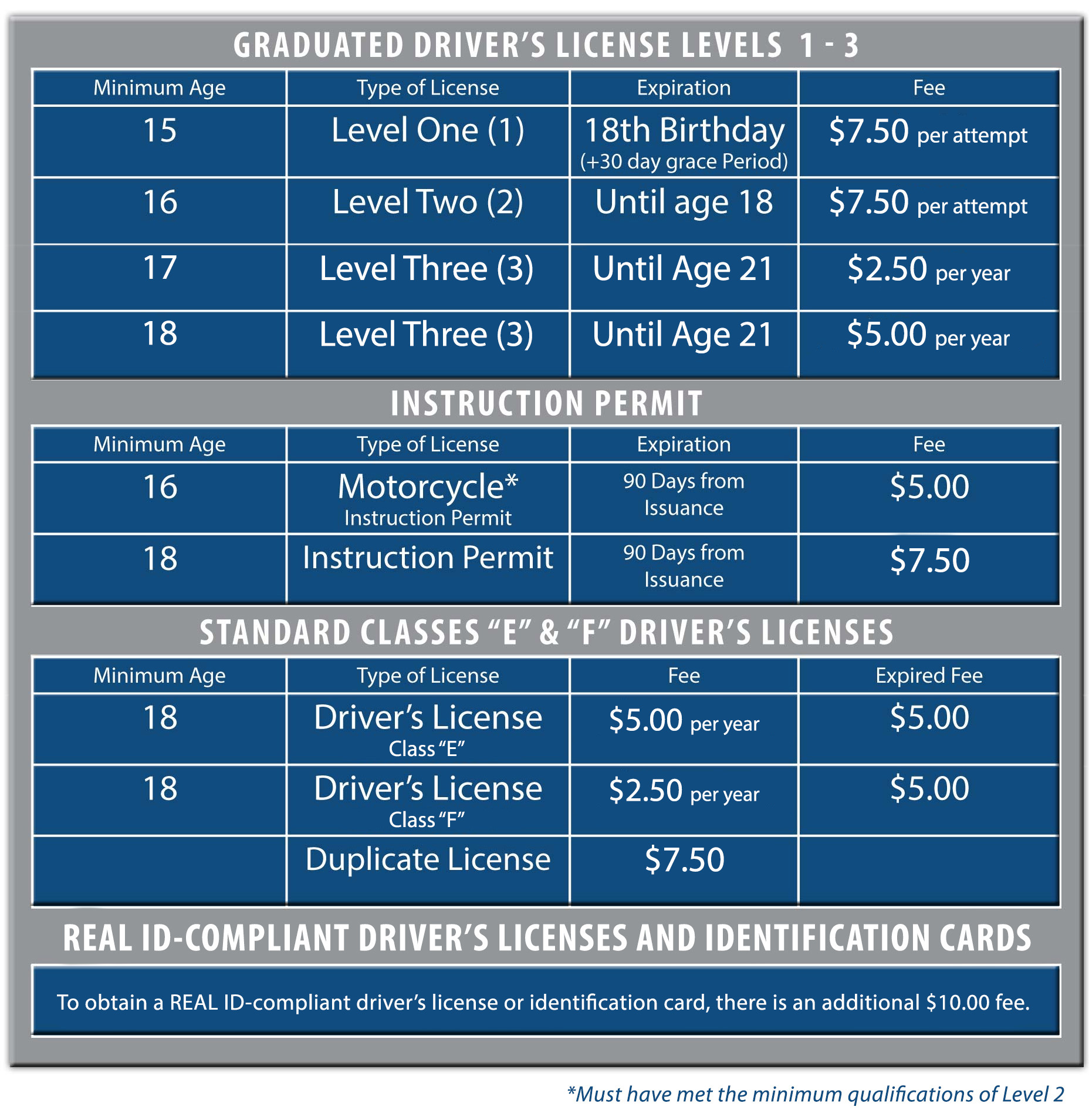The DMV makes it easier for you to remember the expiration date of your driver’s license or identification card. Under the “Drive for Five” program, all driver’s licenses will expire in a year in which your age is divisible by five (for example, age 25, 30, 35, 40, 45, etc.).
Under this program, your license is valid for five (5) years. However, before you begin the five year cycle, the DMV may need to phase you into the program. In order to do this, your initial driver’s license will be issued for a period ranging from three (3) years to seven (7) years, depending on your age at the time of renewal. For instance, if you are or will be 34 in the year that your driver’s license expires, you will be issued a six-year driver’s license that will expire when you are 40.
New driver’s licenses issued after January 1, 2001, expire on the applicant’s birthday instead of at the end of the month. Driver’s licenses expiring on a licensee’s 18th or 21st birthday will have a 30-day grace period to allow the bearer to obtain the appropriate color license.
Please note that the driver’s license fees have increased, effective July 1, 2017. The fees may be more or less for this renewal period, depending on the number of years for which the driver’s license will be valid. Your renewal fee and year of expiration will appear on your renewal card as well.
All driver’s license renewal fees will be based on the number of years you will have a driver’s license until your age is divisible by five (25, 30, 35, 40, etc.), at a rate of $5.00 per year. For example, if you are 21 years old when you renew your driver’s license, it will next expire on your 25th birthday and the fee would be $20.00 ($5.00 x 4).
